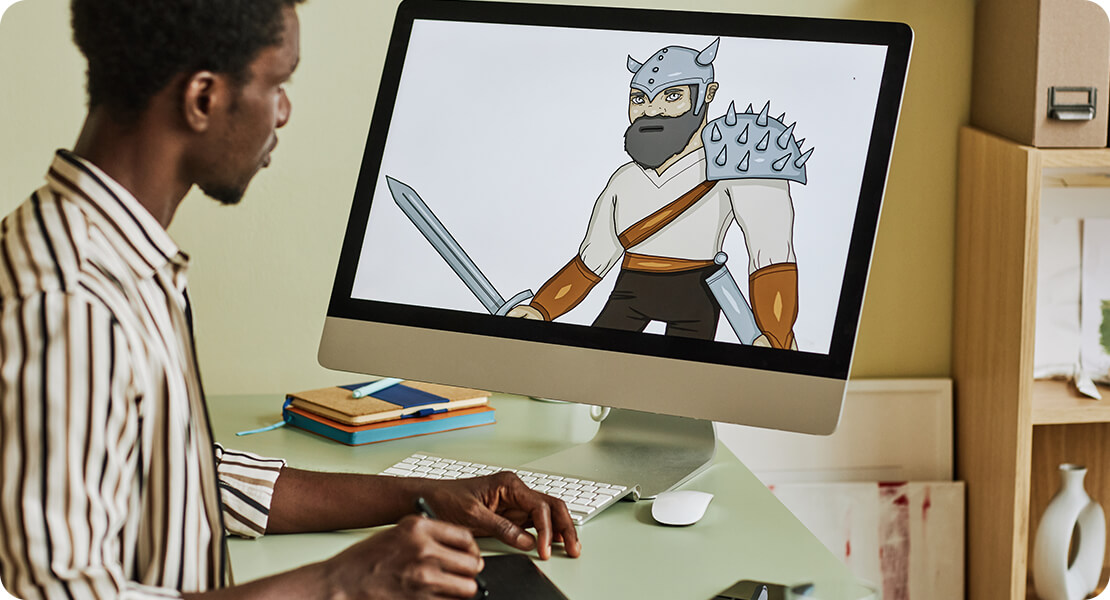
Let’s be honest – you’ve probably found yourself glued to a 15-second animation on Instagram or TikTok more times than you’d like to admit. Whether it’s a witty explainer, a bite-sized skit, or a stylish motion graphic, short-form animated content is everywhere right now – and it’s not going away any time soon. But why exactly has it taken social media by storm?
It’s more than just a passing trend. Short-form animation taps into our craving for instant entertainment, our shrinking attention spans, and our love for visually engaging storytelling. It bridges the gap between art and communication, making ideas more memorable and emotions more impactful. From indie creators to global brands, everyone’s embracing the power of animation – and for good reason. Let’s break it down.
We’re All Obsessed with Speed and Simplicity
Social media is built on quick consumption. We scroll, swipe, double-tap, and move on. In that kind of environment, long-form anything is a hard sell – especially when you’re competing for attention against dancing pets, viral challenges, and endless memes.
That’s where short-form animation shines. In just a few seconds, it can deliver a punchy message, tell a full story, or get a laugh – all without asking for much of your time. It’s like fast food for the brain: quick, easy, and surprisingly satisfying.
The truth is, attention spans are shorter than ever. It’s not that people aren’t interested in good content – they’re just overwhelmed with options. If you can’t hook someone within the first two or three seconds, chances are they’re gone. Animation offers that instant hook. Through movement, colour, and rhythm, it commands attention before a word is even spoken or read.
And here’s the thing – people actually want content that respects their time. A well-crafted 15-second animation that explains an idea or delivers a laugh is far more likely to be shared than a 5-minute explainer video, no matter how insightful it might be. That’s not laziness, it’s efficiency.
In a world where people are constantly multitasking – checking social media on the bus, during lunch, or while waiting in line – bite-sized animated content slots perfectly into those micro-moments. It’s content that fits real life. And that’s exactly why it’s winning.
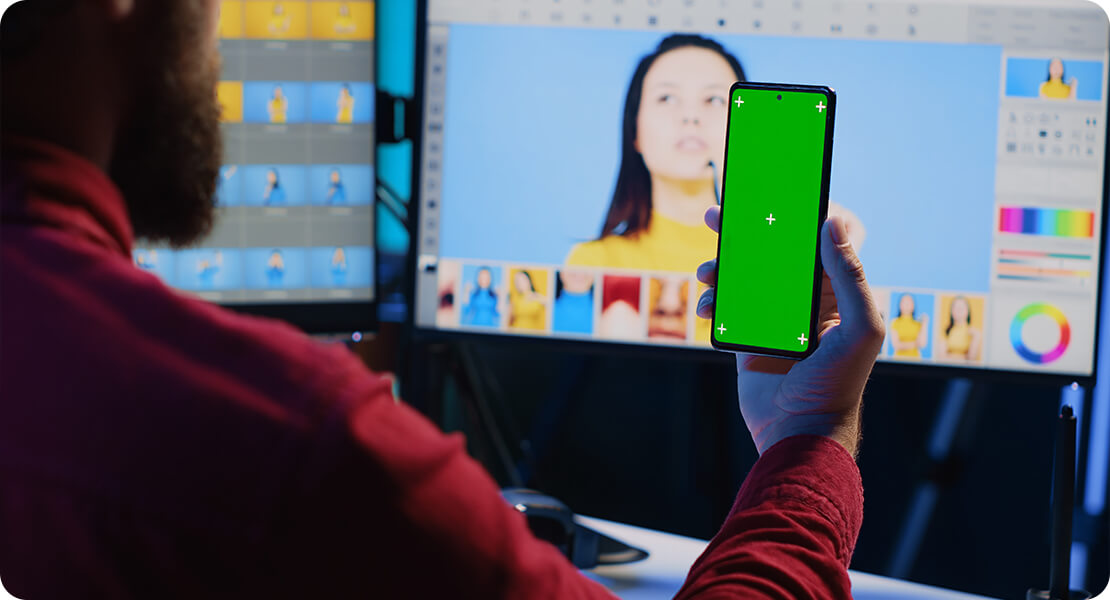
On top of that, animations don’t require sound to be effective – a huge bonus for users watching on mute. With clever visual cues and dynamic design, they deliver impact without relying on audio. That makes them universally accessible and even more likely to be consumed to the end.
Animation Cuts Through the Noise
Let’s face it – the internet is noisy. Everyone’s shouting for your attention. Static images and standard videos are fine, but animation? It moves differently. Literally.
Animated content pops on your feed. The colours are often brighter, the motion is more fluid, and the design tends to be more stylised. That unique visual language grabs attention before a single word is spoken or written.
And because animated visuals aren’t constrained by reality, they can take on exaggerated or surreal qualities that immediately separate them from the crowd. You don’t just see a face – you see a melting clock with eyes, or a smoothie turning into a rocket. That playful unpredictability triggers curiosity and invites a longer look, even from the most jaded scroller.
Another huge bonus? Animation often transcends language barriers. A clever sequence of visual metaphors, facial expressions, or universal symbols can communicate across cultures and demographics without needing translation. That’s a powerful asset for global reach.
Additionally, motion graphics and animated typography can emphasise key messages in ways static designs simply can’t. A bold phrase that bounces onto the screen or a graph that builds itself with flair is far more memorable than a plain image with text slapped on top.
In a saturated space where every brand, influencer, and creator is fighting to be seen, animation doesn’t just join the noise – it breaks through it with style. It’s the equivalent of turning up to a costume party with lights on your hat – impossible to ignore.
It Works Brilliantly Across Niches
You might think animation is just for kids or quirky creatives, but that’s far from the truth now. Businesses, educators, influencers, and activists are all tapping into the format.
Explaining how a product works? Animation. Breaking down a complex topic like climate change or cryptocurrency? Animation again. Sharing a relatable story or joke in a visually memorable way? You guessed it.
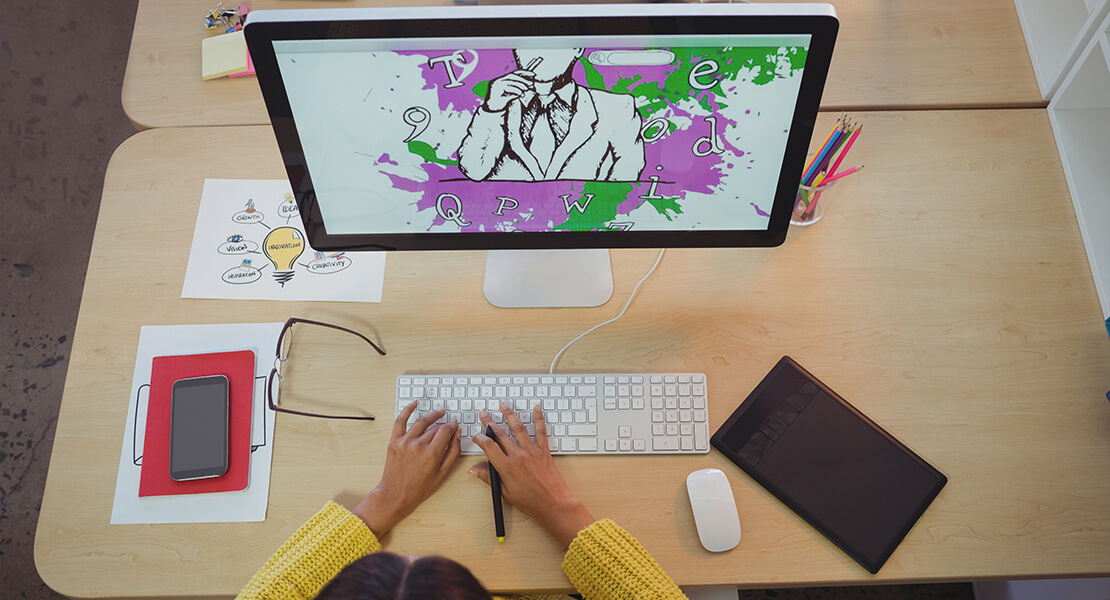
This versatility means animated content fits in just about every niche and industry – from health and wellness to tech and finance. It’s an all-rounder.
Take education, for instance. Animated videos make abstract concepts tangible. From mitochondria to black holes, you can illustrate ideas in a way that textbooks or talking-head videos struggle to achieve. It’s why so many edtech platforms rely on short, animated clips to support learning.
In business, animation is a godsend for marketing. Instead of a traditional product demo, you can showcase features through slick, branded visuals that highlight benefits without overwhelming the viewer. A 30-second animated ad can convey tone, purpose, and utility – and it’s far more likely to be remembered than a standard slideshow or static post.
And then there’s social causes. Activists and NGOs are turning to animation to tell human stories without showing real faces – maintaining privacy while still tugging at heartstrings. It’s empathy and impact, wrapped in motion design.
Even in entertainment, animation is breaking boundaries – from podcast clips with animated segments to music videos created entirely with motion graphics. No matter your message, animation has a way to make it resonate. It’s flexible, accessible, and endlessly adaptable – a true universal tool in the creator’s kit.
Algorithms Love Engagement – and Animation Delivers
Social media algorithms are ruthless. They push content that people engage with – not necessarily what’s best, but what gets watched, liked, shared, and commented on.

Short-form animation tends to tick all those boxes. It often delivers messages quickly, encourages reactions (especially when it’s funny or clever), and has a higher chance of getting watched to the end – a big win in the eyes of most platforms.
And let’s not forget that many of these animations loop seamlessly. That replayability subtly boosts watch time, which in turn boosts visibility. It’s a clever trick used by savvy creators who understand how the game works.
The more someone interacts with your animation – even passively by letting it play a second time – the better it performs in algorithmic terms. TikTok, Instagram Reels, and YouTube Shorts all reward content that keeps people watching, and animated loops are incredibly effective at doing just that.
Moreover, animations tend to be more “reshareable.” People love to send quirky or clever clips to their friends, particularly ones that pack an emotional punch or deliver a relatable joke. That kind of peer-to-peer sharing gives your content another layer of organic reach, which is far more valuable than paid visibility.
Animation also has a unique ability to create brand stickiness. When users consistently engage with short animated posts, platforms begin to prioritise that content in their feeds. Over time, that steady visibility helps grow a loyal audience. In short, animation doesn’t just look good – it performs exceptionally well under the hood.
It’s Ideal for Storytelling in Micro-Doses
We humans are suckers for stories – even tiny ones. A well-made animated clip can introduce a character, pose a dilemma, deliver a twist, and wrap it all up in under a minute. That’s no small feat.
This micro-storytelling format is perfect for the social generation. We don’t always want to sit down for a full film or documentary. But give us a mini-movie in 30 seconds? We’re hooked.
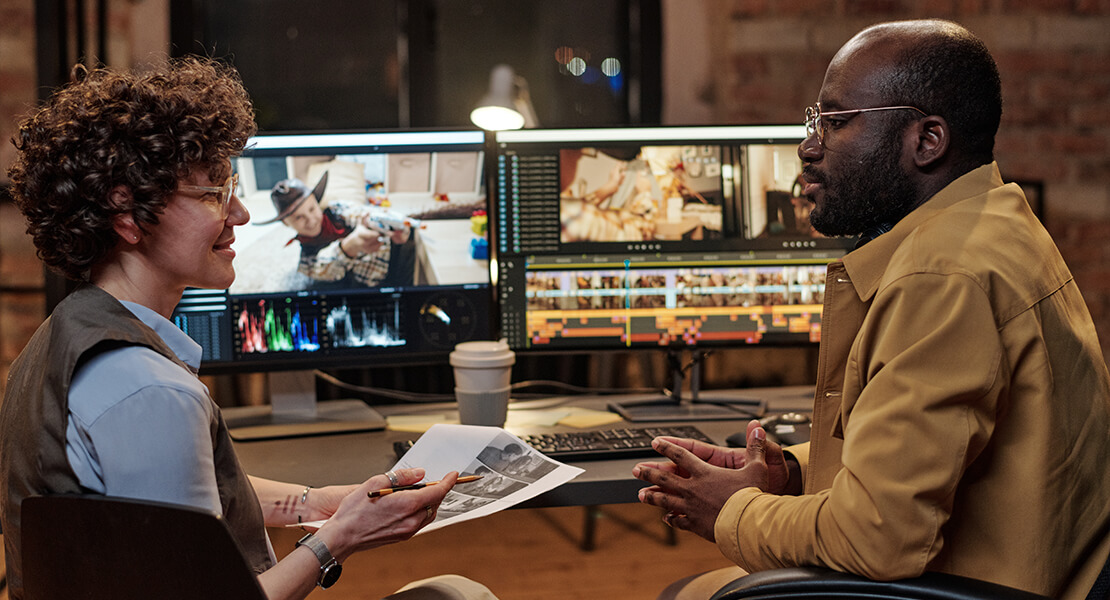
Even better, when done as a series, short animations can build anticipation and loyalty. Think “what happens next?” but in a way that fits neatly between scrolling sessions.
What’s clever about animation in these short bursts is its ability to compress emotional arcs. With just a few cues – expressive eyes, exaggerated movements, sharp timing – an animated character can connect with viewers in seconds. That emotional shorthand is what makes these clips so sticky.
Plus, because animation isn’t tied to the real world, you can tell any story imaginable. Love stories between vegetables? A superhero journey in a biscuit tin? Why not. The freedom of format means there are no limits, and that kind of creative range encourages experimentation and originality.
Series-based animation also lends itself brilliantly to brand storytelling. You can build a fictional world around your product or values, giving your audience characters to root for or scenarios they return to. It becomes more than content – it becomes a narrative experience. And in a sea of forgettable posts, that kind of storytelling is gold.
Brands Are Getting In on the Action
It’s not just creators riding the animation wave – big brands are fully on board too. And why wouldn’t they be? Animation is an excellent branding tool.
It allows for consistent use of style, colour, and tone. It can reflect brand personality better than a standard video ad. And because it’s less dependent on location, actors, or physical products, it’s far easier to scale.
From quirky mascots to slick motion graphics, brands are using short-form animation to build awareness, drive engagement, and boost conversions – all while standing out in an oversaturated content space.
The flexibility of animation allows brands to pivot quickly with trends. Let’s say a meme goes viral or there’s a cultural moment worth tapping into – animated assets can be turned around faster and more cost-effectively than traditional video shoots. That agility is priceless in the fast-paced world of social media marketing.
What’s more, animation often has a longer shelf life. Because it’s stylised and timeless in a way live-action rarely is, it can be reused across campaigns, tweaked for different platforms, or repurposed into a new message altogether. That gives brands a much higher return on their creative investment.
Big names like Duolingo, Mailchimp, and Headspace have all leaned into animation to great effect – creating memorable characters and distinctive looks that make their content instantly recognisable. Duolingo’s cheeky green owl has become a viral icon, Mailchimp’s quirky brand illustrations breathe personality into every email, and Headspace uses calming animations to guide users through mindfulness practices in a visually soothing way.
And they’re not alone. Spotify frequently uses animated loops to promote artists and playlists, creating dynamic visuals that grab attention without overwhelming the viewer. Google often employs playful animations in product demos and Doodles, helping to humanise tech and make information more digestible. Even The New York Times has used short animated explainers to break down complex topics in a more engaging way.

It’s not just marketing anymore – it’s identity-building. Animation helps establish a visual language that’s memorable, shareable, and scalable. And smaller brands are following suit, proving you don’t need a massive budget to create something eye-catching and on-brand. With the right concept and execution, even a simple animated character or sequence can become a brand signature – instantly recognisable and widely loved.
It’s Surprisingly Cost-Effective
Here’s something that surprises a lot of people: animation isn’t always expensive. Sure, top-tier 3D work can cost a fortune, but many social media-friendly animations – especially 2D and motion graphics – are relatively affordable.
Compared to live-action videos, there’s no need for actors, camera crews, locations, or permits. Once the assets are created, they can be reused and repurposed across platforms. That’s a big win for small businesses and solo creators.
Even better, the cost-benefit continues to grow over time. While a live-action shoot might only yield one or two usable clips, a single animated character or scene can be reworked into dozens of pieces – from Reels to Stories to banner ads. That reusability adds serious value.
There’s also less overhead. No weather delays, no location fees, no worries about lighting or gear. You’re working in a digital sandbox, which allows for more flexibility, faster turnaround, and fewer surprises. If something’s not working, it can be tweaked with a few clicks – no need to reshoot or rehire.
This cost-effectiveness opens the door for experimentation. Creators can test different styles or storylines without breaking the bank. For businesses, it means being able to run A/B tests or seasonal campaigns with unique animations that still stay on budget.
Plus, animation projects can often be handled remotely, cutting out travel and studio costs. Freelancers and agencies from across the globe can collaborate without ever meeting in person – saving time, resources, and logistical headaches.
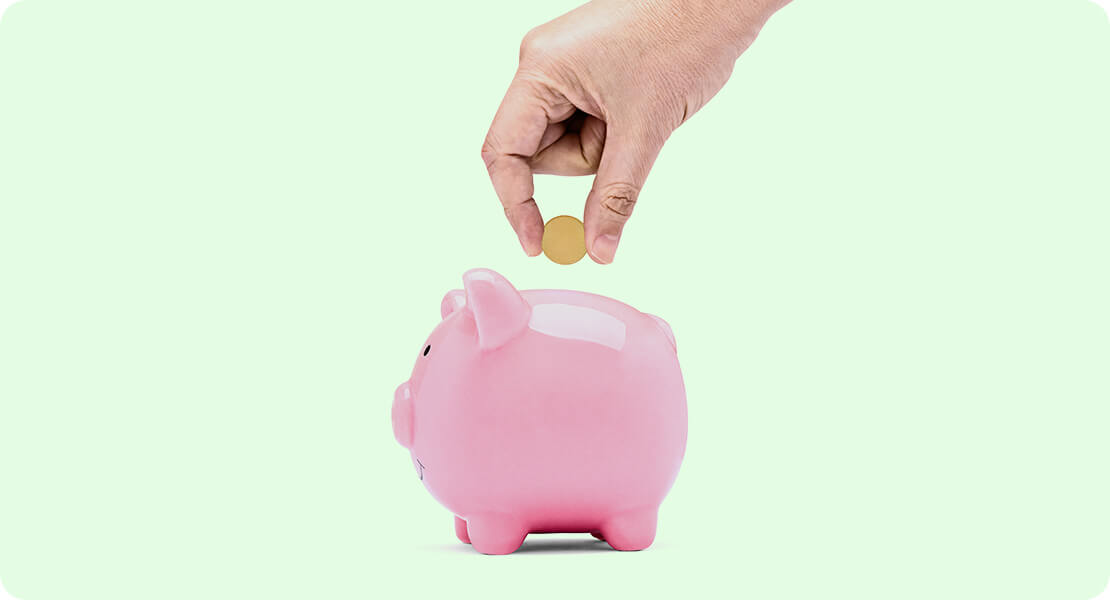
Ultimately, animation gives you a polished, professional look without the hefty production costs of traditional video. And in an era where content is king, being able to produce more for less is a massive advantage.
The Rise of DIY Tools and Templates
A big part of this animation explosion is accessibility. Ten years ago, creating an animation required specialist software and serious skills. Now? You’ve got apps and platforms that let anyone create slick animations with just a few clicks.
From Canva and Adobe Express to mobile apps like CapCut and LottieFiles, the tools are out there – often free or cheap – putting animation into the hands of everyday creators.
This democratisation means the space is no longer dominated by studios. Independent animators and casual content creators are making viral hits on the regular – sometimes with nothing more than a smartphone and a good idea.
Drag-and-drop interfaces, pre-built templates, and asset libraries have completely changed the game. You don’t need to understand keyframes or easing curves to make something that looks sharp and engaging. Whether you’re building a logo animation, explainer video, or funny meme, there’s a template out there ready to go.
Even better, many of these tools are cloud-based, meaning you can collaborate with others in real time or access your projects from anywhere. That’s perfect for remote teams or creators who like to work on the go.
The result? A wave of creativity that isn’t restricted by technical know-how or big budgets. People are learning through doing, pushing boundaries, and making content that feels authentic because it’s created by real people, not agencies.
And because these tools are evolving rapidly, the barrier to entry keeps getting lower – which means the next great animated trend could literally be made on a phone in someone’s bedroom. That’s the beauty of this moment.
The Bottom Line
Short-form animated content is dominating social media because it’s the perfect fit for how we consume media today: fast, fun, and visually engaging. It’s versatile, accessible, and algorithm-friendly. Whether you’re trying to inform, entertain, or sell, animation gives you a unique edge.
Its ability to condense complex ideas into eye-catching visuals means you can deliver high-impact messages without losing your audience’s attention. Plus, the format is adaptable across platforms – whether it’s Instagram Reels, TikTok, YouTube Shorts, or even LinkedIn posts, animated content can be tailored to suit different styles and audiences.
As more brands and creators realise the power of this format, it’s becoming an essential part of modern digital strategy. It isn’t just a nice-to-have anymore – it’s a must.
If you’re not already using it – whether as a creator, marketer, or brand – you’re missing out on one of the most effective content formats out there right now. So maybe it’s time to give your feed a little motion magic and let animation do the heavy lifting. If you’re interested in short form animated content for your business, feel free to get in touch with us at Spiel for a chat — we’d be happy to explore ideas with you.

